At 4:37 a.m. EST on Jan. 29, 2020, NASA's Parker Solar Probe broke speed and distance records as it completed its fourth close approach of the Sun.
At 4:37 a.m. EST on Jan. 29, 2020, NASA's Parker Solar Probe broke speed and distance records as it completed its fourth close approach of the Sun.
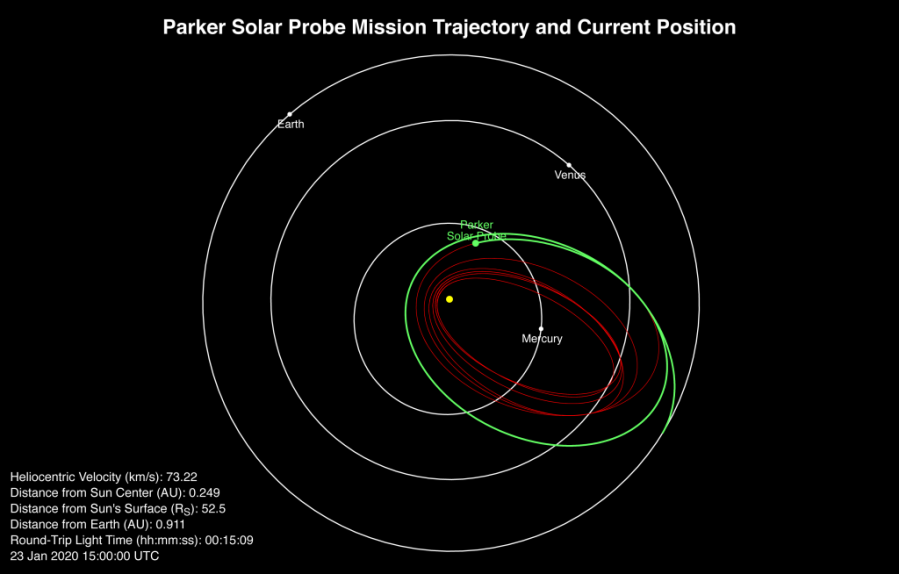
NASA's Parker Solar Probe began its fourth solar encounter on Jan 23, 2020, at 9:00 a.m. EST, at a distance of about 23.3 million miles from the Sun's surface.
On Dec. 26, Parker Solar Probe successfully completed its second flyby of Venus.
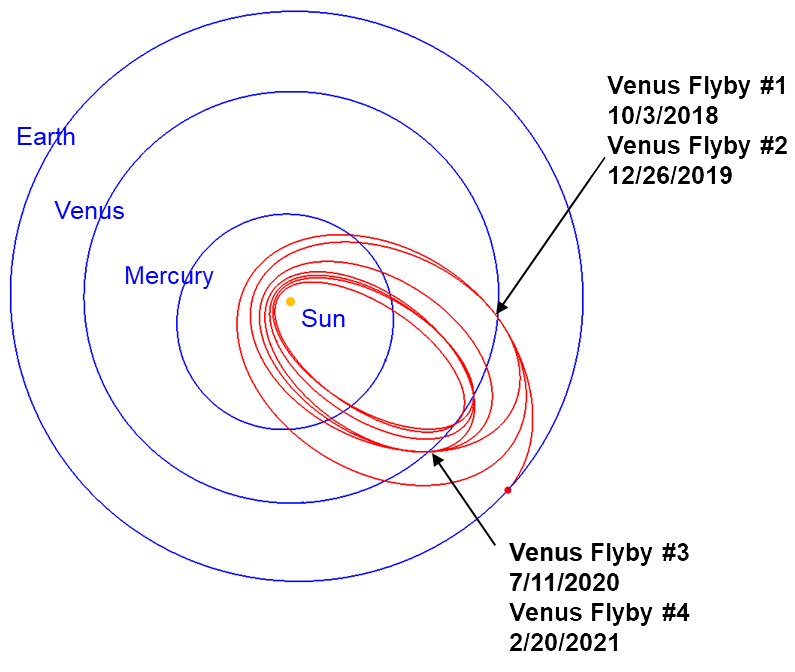
After nearly 17 months in space culminating with the release of new science data, Parker Solar Probe is right on course for its second Venus gravity assist maneuver.
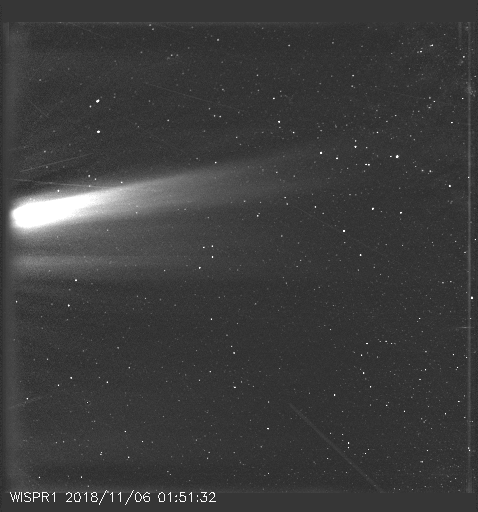
On Nov. 12, 2019, NASA's Parker Solar Probe team released scientific data collected during the spacecraft's first two solar orbits.
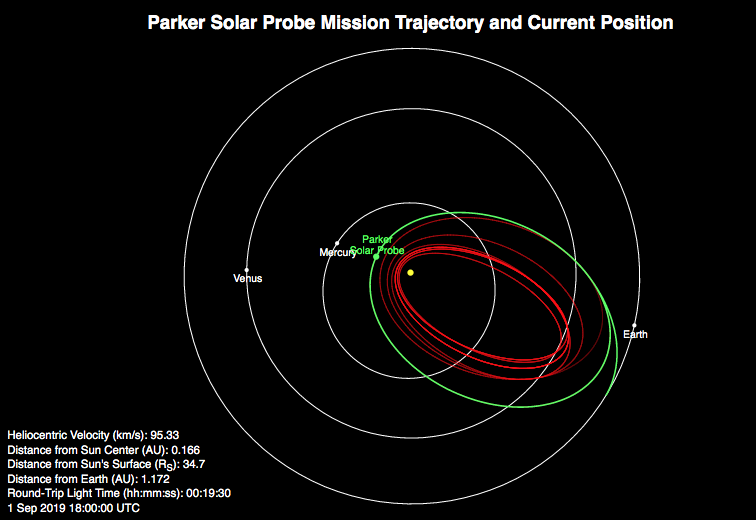
At just before 1:50 p.m. EDT on Sept. 1, 2019, NASA's Parker Solar Probe completed its third close approach of the Sun.
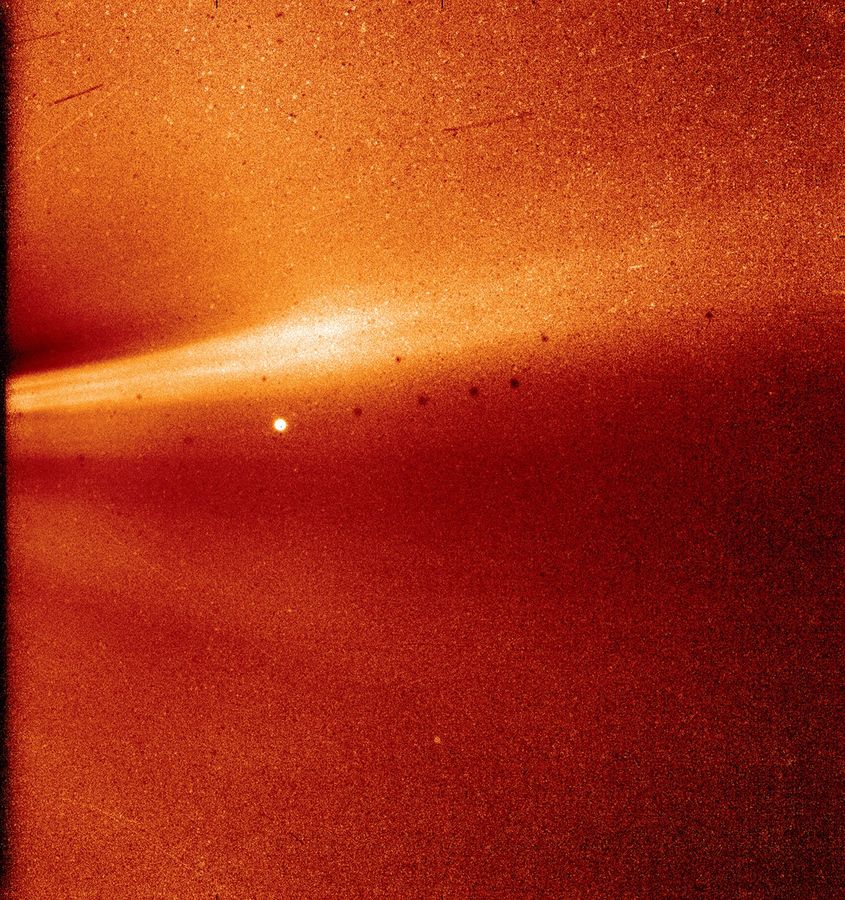
After Parker Solar Probe's successful first year in space, the mission team has decided to extend science observations as the spacecraft approaches its third solar encounter.
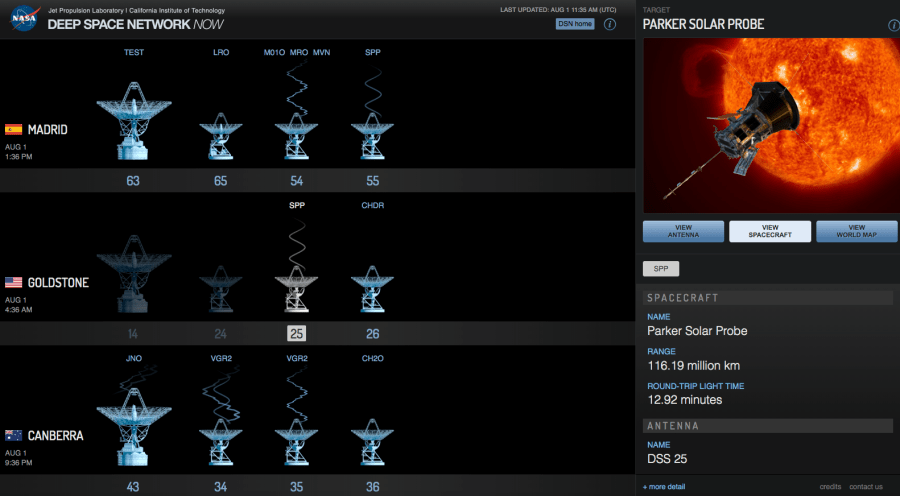
On May 6, 2019, the final transmission of 22 gigabytes of planned science data was downlinked by the mission team.
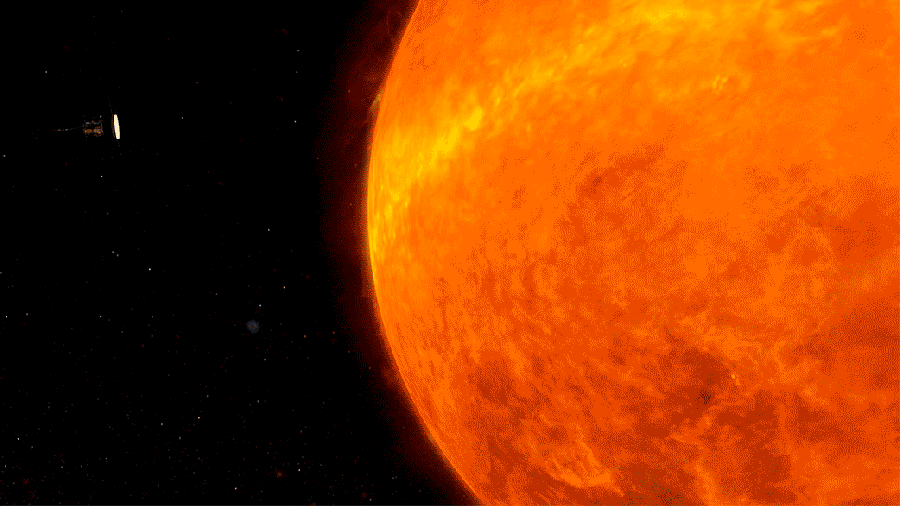
Parker Solar Probe has successfully completed its second close approach to the Sun, called perihelion.
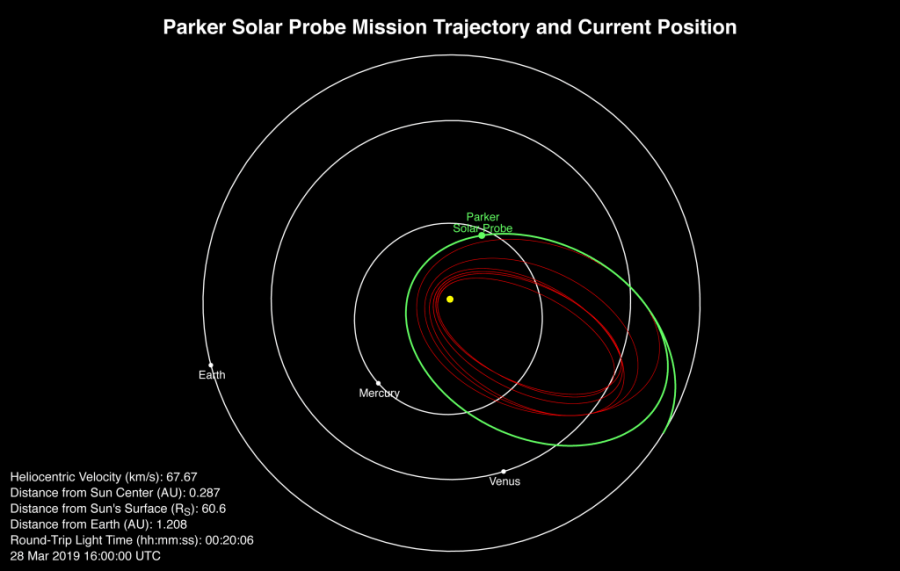
On March 30, 2019, Parker Solar Probe begins the second solar encounter phase of its mission, culminating in its closest approach to the Sun, called perihelion, on April 4 at 6:40 p.m. EDT.